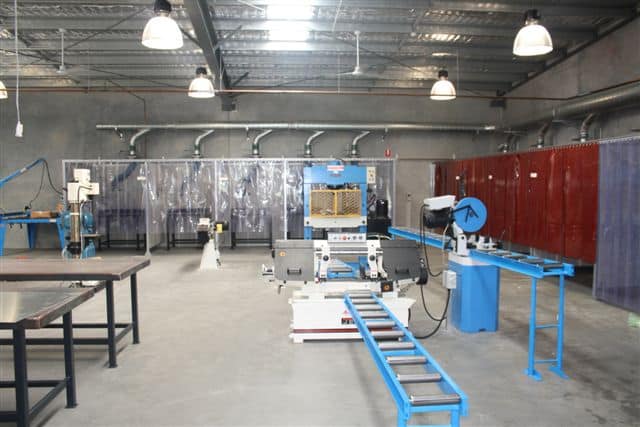Call 1300 799 969 | Contact Us


Home » Strategies for Noise Control in Australian High Schools
In secondary schools, managing noise levels is crucial for creating an optimal learning environment. Excessive noise can hinder concentration, disrupt communication, and ultimately impede academic performance. As schools strive to provide conducive spaces for learning, implementing effective noise control strategies becomes essential.
In this article, Flexshield’s experts will explore common noise sources in secondary schools, including metal trade training centres, and discuss practical solutions for mitigating noise to create optimal learning environments. The solutions discussed involve a combination of Flexshield and Avenue Interior Systems products.
Secondary schools are dynamic spaces teeming with activity, which means various sources contribute to elevated noise levels. While student chatter and classroom activities are often recognised as culprits, specialised areas like metal trade training centres can introduce unique challenges. The clanging of metal tools, machinery, and equipment in these vocational training spaces can generate significant noise, which impacts adjacent classrooms and hallways.
Excessive noise in school environments can harm student learning and wellbeing. Research indicates persistent noise can hinder concentration, increase stress levels, and diminish cognitive performance.
In classrooms adjacent to metal trade training centres, the disruptive noise can make it difficult for students and teachers to communicate effectively, leading to frustration and reduced academic productivity.
A multifaceted approach is essential to address noise challenges in secondary schools, including those stemming from metal trade training centres. Here are some effective noise control strategies:
Sound-absorbing materials such as acoustic ceiling tiles, acoustic wall panels, and carpeting can help to dampen noise levels in classrooms and common areas. Consider using specialised acoustic barriers or acoustic curtains to contain noise within the designated area in metal trade training centres.
Optimise the layout of classrooms and vocational training spaces to minimise sound transmission. Positioning quieter areas, such as libraries or administrative offices, between noisy spaces can act as buffers. Additionally, strategically placing furniture and equipment within classrooms can help diffuse sound reflections.
To mitigate noise disruptions, explore the integration of technology-driven solutions such as sound masking systems or noise-cancelling headphones. Investing in modern equipment with noise-reducing features in metal trade training centres can help minimise overall noise output.
Educate students, teachers, and staff about the importance of maintaining a quiet learning environment and the impact of noise on academic performance. Implement classroom management techniques to encourage respectful noise levels during activities and transitions.
Work alongside trade programs and vocational training centres to implement noise control measures within metal trade training facilities. This may include scheduling noisy activities during non-peak hours or investing in soundproofing upgrades for equipment and machinery.
Creating quiet learning environments in secondary schools requires a proactive approach that addresses diverse noise sources, including those associated with specialised vocational training centres such as metal trade training facilities.
By implementing a combination of acoustic treatments, strategic design principles, technological solutions, and educational initiatives, schools can cultivate tranquil spaces conducive to student learning and wellbeing. Prioritising noise control enhances academic outcomes and fosters a positive school culture where both students and educators can thrive.
For engineered solutions for educational settings, contact Flexshield 1300 799 969